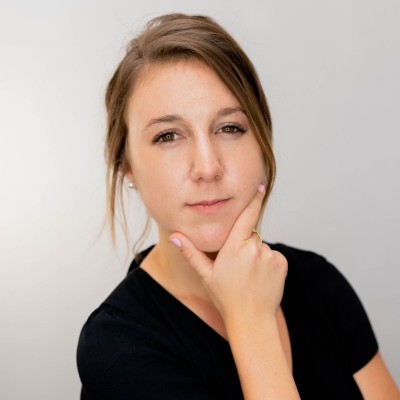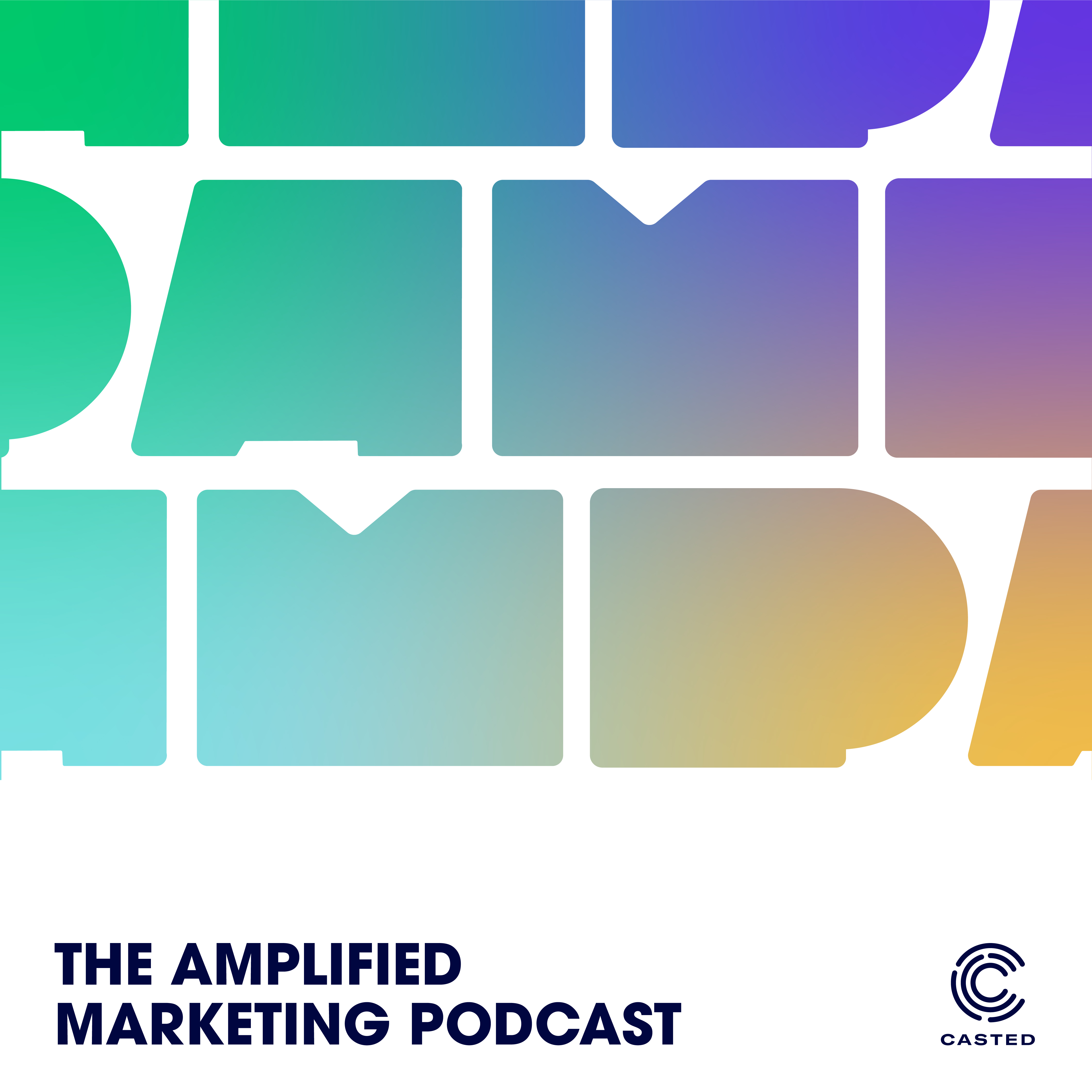How B2B Podcasts Grow Up: What’s in a Number? Debunking Podcast ROI
- 0.5
- 1
- 1.25
- 1.5
- 1.75
- 2
Lindsay Tjepkema: So they say what gets measured gets managed. Ain't that the truth? It's very true also even in podcasting, but there's some value in the immeasurable too. Brand awareness, association, resonance, for example. Are all podcasts lumped into that group too, or can you accurately measure podcast listenership to the degree where you should be tracking your ROI? That last thing you want is to throw money at a strategy that isn't working, a problem not worth solving, especially right now. So in this episode of The Maturity Curve series, we will explore exactly that, how to measure the success of your show, to know if it's worth it before you dedicate the time, energy, and love to creating a show for your audience. I'm Lindsay Tjepkema, a lifelong marketer and proud CEO and Co- founder of Casted, the B2B marketing platform for brand podcasters. And I've teamed up with experts across the top sales and marketing teams in the world to detail each of the five stages of this maturity curve and what you can do to launch and grow a show with confidence. This is how B2B podcasts grow up, an original series from Casted. Stage one of the maturity curve marks the time to prepare to gauge whether a podcast for your brand is worth the trials and tribulations you inevitably go through on the way up. Part of this experimentation process is determining how you'll measure the success of your show. There are so many different schools of thought in measuring a podcast. Some even claim that you can't or shouldn't measure it. So for the sake of the argument today, let's explore all of our options. I brought in some of my friends across the country, across the industry, and in this episode we'll have Tina Rozul and Megan Collins from Salesforce's Marketing Cloud cast, Hyka Young, a previous host, largely responsible for the growth of that same hit show. And finally, Sam Balter and Meghan Keaney Anderson, formerly of the HubSpot Growth Show team. So let's set the foundation for those who say numbers are everything to podcast success. What data matters, what doesn't? Heike Young from Salesforce has these thoughts.
Heike Young: I would not only look at downloads, but I would also look at certainly duration, listened to. This is something Jay Acunzo says all the time, " Get them to the end." That's the most important thing. What percentage are actually getting to the end? And if they're not getting to the end, there could be a couple things at play. It could be too long of content, it could be not resonant enough. There's some different things you could look into there. I also did a number of listener surveys to just inquire what were some of the most interesting pieces of content to them, what were their favorite interviews, as well as their least favorite. So it's hard, but you kind of got to ask, " What don't you like about this?" And you'll get some really interesting answers. And then I also measured success by a number of customer stories highlighted, so I wanted to make sure we had a sufficient number of those each quarter, as well as how it spawned off other content. So we talked about how this can be the crux or the apex of a multifaceted content strategy. So just measuring how many other types of content that we were able to create based on these interviews, which admittedly are kind of a high lift. There's definitely a lot more I think that podcasters can look into for their specific business needs. I think more so than just the numbers alone, there's so many vanity metrics around this" Oh, we're in the top 10 on iTunes in the business category" or whatever that are great, but I think for me, what I was more pleased with was just kind of the resonance. We won a couple awards, one for Best podcast from the Content Marketing Institute, one for best content marketing multi- year program, which I'm probably more proud of just because I think anybody can create something cool one time, but it's really if you can create something cool repeatedly that is more impressive.
Lindsay Tjepkema: Shout out to Jay Acunzo, content marketing legend and good friend of mine who agrees with Hyka Young on the measurable and immeasurable aspects of a podcast. She mentioned here that resonance is likely the most important metric that you can get. Podcasting is such an intimate form of marketing though. Where else did you get 20 to 60 minutes of uninterrupted advertisement in your customer or prospect's ears? How do you build that relationship at scale with your entire audience? That's why qualitative data is so important. Get them to the end to really know what your listeners enjoy and what are their completion rates. If they're dropping off, why don't they stick around for the full content? Do you have the ability to ask them? Creating focus groups is a consistent lesson across our podcast experts on stage one and stage two of the maturity curve.
Tina Rozul: Through the power of sound and our authentic voices are an intentional storytelling, we're also connecting people. Whether you're planning, trying to do an episode or trying to get structure, I think part of that ROI is connection. And you don't always see a dollar sign to that, but it's like it's real, it's human, and it's really what gets people moving day in and day out.
Lindsay Tjepkema: Nailed it. Tina, from the marketing podcast stresses that not everything in podcasting is measurable. How do you make people feel? How are they connecting with your brand? Because after all, love isn't quantifiable. Meghan Keaney Anderson was the host of HubSpot's Growth Show for several years, and she echoes that same thing. Sure, you have your core quantifiable goals, number of listeners, percentage growth from season to season, returning listeners, new listeners, all of that, but I think about the extra benefits of launching and growing a show. Take a listen to Megan.
Meghan Keaney Anderson: There's always the thing that you're initially going after, and then there are all these epiphenomenal nice consequences that happen. So your North Star is typically listenership in the audience you're going after, and you want to see that growing year over year. You want to see the audience come back. When you break for a season, you want to see the engagement rates stay high all the way through. That is the beautiful thing about podcasts is when people sit down to listen to a podcast, they listen all the way through. You're getting their attention, their full attention in many cases for 20, 30, 40 minutes. And that's so rare there. So certainly those listenership and growth numbers are what we're looking for. We're looking for distribution and access to a broader audience. But there are all sorts of secondary benefits to doing podcasts. And for me, one of the biggest ones has been for the Growth Show in particular, it's created access points to some of the most incredible business leaders and stories that I've ever come across us.
Lindsay Tjepkema: Collaboration and podcasting is a big deal, not only to grow your audience with new viewpoints, but also to work with other rock stars across your industry and reach their fans. So network effects for the win big time, but how can you take advantage of other perspectives and partners and still maintain your marketing voice? Megan Collins has the answer.
Megan Collins: The podcast is just thought of as just another channel. For our Q4 efforts, we want to close all the pipe that's out there, and so we can do that through all hands on deck. And all of our toolkits that are going out to our sales teams, it's packaged everything up that's focused on account- based marketing, podcasts being one of them. It's packaging up everything from industry's perspective. So anytime we brought in a specific guest that's in a particular industry, you're going to be baked into this. So that's all being weaved in to have one voice, which is groundbreaking from, if I look a couple of years ago, it was a great podcast and we were doing great things, it felt great, but the fact that now we're looking back, it could have been so much more weaved in to the point where it is now. And next year's going to be even better now that we have Casted.
Lindsay Tjepkema: The omnichannel approach, that's Megan's message. Newsflash, when it comes to your marketing strategy, a multi- channel approach allows you to connect with people, no matter their interests and preferences. What one customer enjoys consuming, another hates. You know this. I know this. We're all humans. And podcasting allows you to create infinite amounts of content for each and every type of customer you have. So do you want to reach your readers, create a blog post out of your latest episode. Or how about Gen Zers or those that are really big fans of TikTok or Instagram, clip short form videos from your podcast, use them there. Boom. So HubSpot took a different approach and instead of creating a single show and repurposing it for all different types of customers from the start, they instead produced many shows and targeted different audiences with each one. Here's Sam Balter, former Senior Marketing Manager of podcasts at HubSpot on that exact topic.
Sam Balter: So when I was there, HubSpot had experimented with a few different shows, like the Growth Show had been going on for at least five years. We had just started a new kind of more broad awareness show. Weird Work that I had been hosting where I interviewed people with weird jobs. And then we also had a show that was very educational focused called Skill Up that the first season was about SEO. And I think looking at HubSpot, one of the great things was that each show addressed a distinct need and kind of a distinct audience. Whereas Weird Work was a good way for us to get brand recognition, to build brand affinity, to kind of have this interesting voice in the market and gain a lot of exposure there, you could see Growth Show as kind of a thing for thought leadership, a lot of lifting up our core brand values. But one of the things that a lot of you'll come to HubSpot for is to learn educational things and get better at sales or marketing or SEO or whatever it is. So Skill Up provided an avenue for that. So I think one of the great things was just seeing how HubSpot was tailoring shows to different audiences.
Lindsay Tjepkema: A different approach and a whole different way to measure the success of your podcast. The important lesson to take from this episode of the podcast Maturity Curve series, define your success metrics early, but know that you'll have plenty of opportunities to get extra benefits along the way, and to look at other metrics as you growm, like collaborating with your industry's best of the best or creating a stronger connection with existing customers. The power is in your hands to create a show worth listening to. Really it is. So in the next episode, you'll hear from these same podcast lifers on how to launch your show now that you've successfully planned for it. Thanks to our friends, Megan Collins, Tina Rozul, Hyka Young, Meghan Keaney Anderson, and Sam Balter for sharing their experiences and expert advice from their many years in podcasting. We'll talk to you soon.
DESCRIPTION
“To measure listenership or not to measure listenership. That is the question.” — Shakespeare, probably
Is your show all about sales attribution? What about strengthening current customer relationships? Or do you want to reach new partners and in turn, a new audience?
In the second episode of the How B2B Podcasts Grow Up series, Casted CEO Lindsay Tjepkema interviews Megan Collins, Tina Rozul and Heike Young and Sam Balter and Meghan Keaney Anderson to reveal the various ways in which the world’s most successful podcast companies measure ROI.
Today's Guests
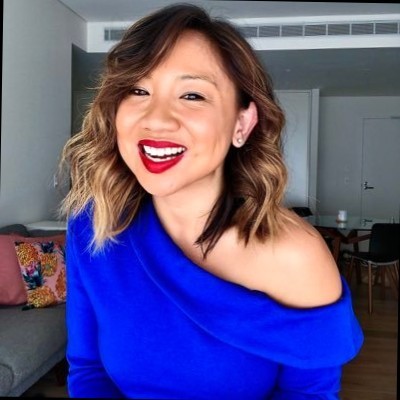
Tina Rozul

Sam Balter
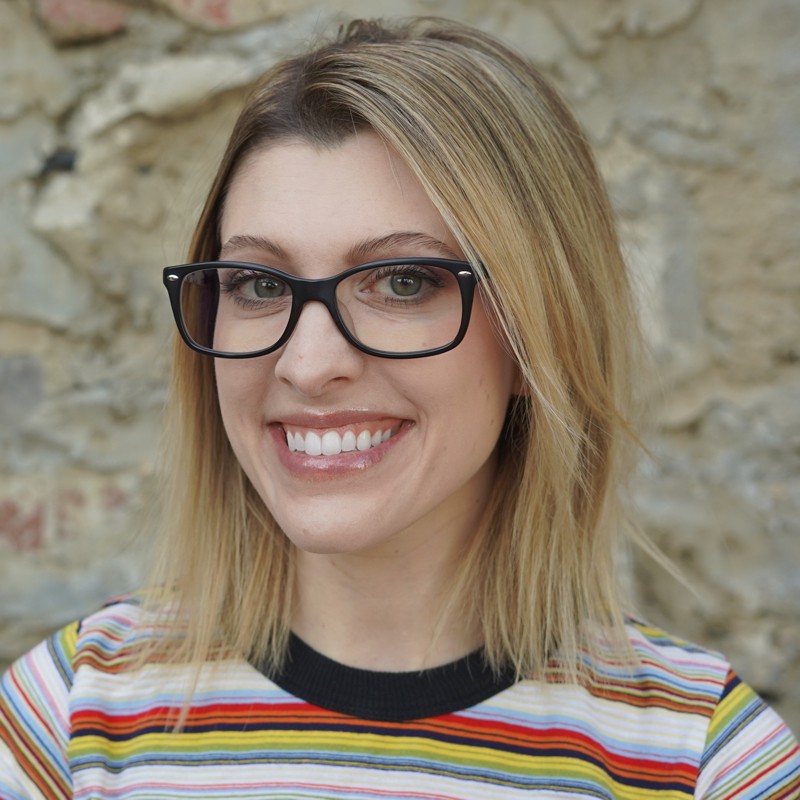
Heike Young
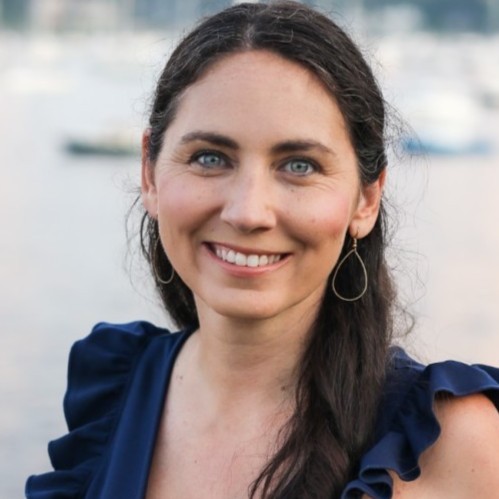
Meghan Keaney Anderson
